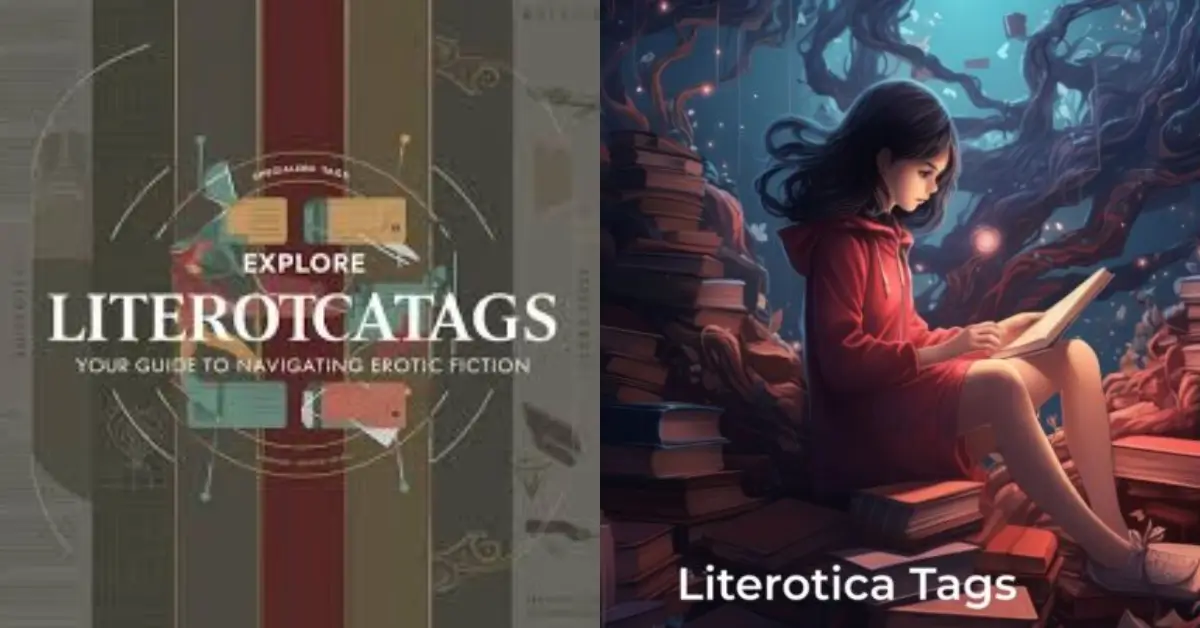Literoticatags: Transforming the Way We Explore Erotic Literature

Literature has long served as a mirror to human emotions and imagination, and in recent years, the rise of digital platforms has introduced new dimensions to storytelling. Among these innovations, literoticatags stand out as a powerful tool, revolutionizing how writers and readers engage with erotic literature.
By enabling precise categorization and discovery, literoticatags empower creativity, enhance accessibility, and foster a dynamic community around this unique genre.
What is Literoticatags?
At its core, literoticatags refer to the system of categorizing and labeling stories within the realm of erotic literature. These tags serve as signposts, guiding readers to content that aligns with their tastes and preferences.
For writers, these tags open avenues for better audience targeting, ensuring that their creative works resonate with the intended readership. From thematic elements to niche interests, literoticatags simplify the art of connecting storytellers with their audience.
The Fascinating Evolution of Literary Tags
Tags have not always been a staple of storytelling. Traditionally, genres like romance, drama, or fantasy served as broad categories to classify stories. With the advent of digital platforms, however, tagging systems emerged as an effective way to address the growing diversity in storytelling.
Literoticatags have adapted to meet the specific needs of erotic literature, allowing creators to explore themes like BDSM, romance, and fetish while ensuring readers can navigate this complex landscape with ease.
Read Also: XannyTech.net
Why Tags Matter in Storytelling
Tags are more than organizational tools; they are essential for creating a seamless storytelling experience. By providing detailed descriptors, literoticatags enable readers to filter stories based on their preferences, whether they are searching for specific themes or subgenres.
For writers, tags act as a compass, offering insights into reader trends and helping them craft content that resonates. This mutual benefit underscores the pivotal role of literoticatags in shaping modern storytelling.
Exploring the Connection Between Literotica Tags and Reader Preferences
- Literoticatags facilitate personalized content delivery, ensuring readers find stories tailored to their tastes.
- By analyzing tags, writers can uncover emerging trends and themes, staying ahead in a competitive market.
- Tags allow readers to discover niche themes, fostering inclusivity and representation within the genre.
How Tags Empower Writers to Connect with Audiences
For writers, literoticatags are a gateway to audience engagement. By carefully selecting and implementing relevant tags, writers can:
- Enhance the visibility of their work on literary platforms.
- Tap into specific reader demographics, creating a loyal following.
- Experiment with new themes and subgenres, broadening their creative horizons.
The Role of Tags in Categorizing and Enhancing Erotic Literature
Bringing Structure to a Diverse Genre
Erotic literature is vast and diverse, spanning various themes, settings, and styles. Literoticatags offer structure, helping readers navigate this diversity with precision.
Ensuring Accessibility and Inclusivity
By accommodating a wide range of interests and identities, tags make erotic literature more inclusive, catering to readers from all walks of life.
Creative Uses of Literotica Tags for Storytelling Inspiration
Tags are not merely functional; they are a source of inspiration for writers. By exploring existing tags and their popularity, writers can:
- Discover new ideas and themes to incorporate into their stories.
- Craft narratives that blend multiple genres, creating unique storytelling experiences.
- Gain insights into audience preferences, refining their creative approach.
Breaking Boundaries: Unique Themes and Tags in Erotic Genres
- Tags like “taboo,” “roleplay,” and “slow burn” push the boundaries of traditional storytelling.
- Emerging themes such as polyamory, gender exploration, and power dynamics reflect evolving reader interests.
- Writers use literoticatags to delve into complex emotions and relationships, enriching the narrative experience.
How Online Platforms Revolutionized Tagging Practices
Digital platforms have redefined the tagging process, introducing sophisticated algorithms and community-driven feedback mechanisms. These innovations ensure that:
- Tags are intuitive and aligned with user expectations.
- Readers can interact with tagging systems, suggesting new tags and enhancing existing ones.
- Writers benefit from data-driven insights, optimizing their content for maximum impact.
Analyzing Reader Trends Through Tagging Data
Tags provide a wealth of information about reader behavior and preferences. By analyzing this data, writers and platforms can:
- Identify popular themes and subgenres, such as romance subplots or niche fetish stories.
- Predict shifts in reader interests, staying relevant in a dynamic market.
- Tailor content recommendations, enhancing reader satisfaction.
| Trend | Observation | Example |
| Rising Interest in Diversity | Readers gravitate toward inclusive themes. | Tags like Gender Exploration, LGBTQ+. |
| Preference for Emotional Stories | Tags focusing on relationships and emotions perform well. | Slow Burn, Forbidden Love. |
| Popular Niche Tags | Growth in unconventional themes and interests. | Roleplay, Power Dynamics. |
The Influence of Community Feedback on Tag Development
Community engagement plays a crucial role in shaping literoticatags. Through active participation, readers and writers contribute to:
- Refining existing tags for clarity and accuracy.
- Introducing new tags that reflect emerging interests and themes.
- Fostering a collaborative environment, where feedback drives innovation.
Innovations in Tagging Systems for Digital Publishing
- Advanced algorithms analyze reader preferences, delivering personalized recommendations.
- Interactive tagging tools allow writers to experiment with keywords and themes.
- Tags evolve to include multimedia elements, such as visuals and audio, enriching the storytelling experience.
Ensuring Inclusivity and Diversity Through Literotica Tags
Tags are instrumental in promoting diversity within erotic literature. By highlighting underrepresented themes and voices, tags:
- Create a platform for marginalized writers and communities.
- Encourage exploration of diverse perspectives, fostering empathy and understanding.
- Ensure that readers from all backgrounds feel represented and valued.
Best Practices for Writers to Use Tags Effectively
- Research popular tags within your genre to identify trends.
- Use a combination of broad and niche tags for maximum reach.
- Keep tags relevant and accurate to avoid misleading readers.
Read Also: Brittnee Dancho Missing Maryland
Conclusion
Literoticatags are a transformative tool in the world of erotic literature, bridging the gap between creativity and accessibility. By empowering writers and enhancing the reader experience, these tags continue to shape the future of storytelling.
As the genre evolves, the potential of literoticatags remains boundless, promising a dynamic and inclusive literary landscape.
FAQs
What are literoticatags?
Literoticatags are categorization tools used in erotic literature to enhance discoverability and reader engagement by tagging stories with relevant themes and genres.
Why are tags important in storytelling?
Tags simplify navigation, personalize content delivery, and provide writers with insights into reader preferences, making storytelling more engaging and accessible.
How can writers effectively use tags?
Writers can optimize their use of tags by researching trends, combining broad and niche keywords, and aligning tags with their story’s themes and audience.
Are literoticatags inclusive?
Yes, literoticatags promote diversity by representing a wide range of themes, voices, and perspectives within the genre.

